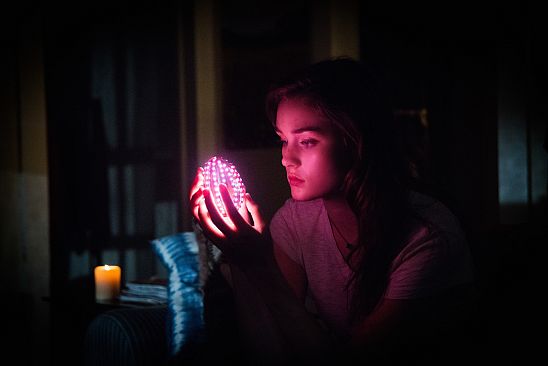
by Aimee Wilson | Sep 6, 2022
“I’ve built my reputation on being the wireless guy since I don’t run any dmx from my cart to my dimmer console, so I’ve made a niche for myself,” states Wilmington, NC-based lighting console programmer Tommy Sullivan Jr. Sullivan’s credits include the SpongeBob Squarepants movie, Swamp Thing; Homeland; and Steven King’s Under the Dome, just to name a few. Some of his success is due to his equipment. “Every single DMX controlled light that we carry on our cart has a RC4 Wireless 900MHz miniature data receiver that we keep on it,” he confides.
Sullivan is also an RC4 Wireless power user. “I have quite the collection of RC4 products; Jim has told me I’m up there with Disney when it comes to the amount of RC4 gear I own,” Sullivan admits. In fact, his collection includes the original RC4 line, RC4Magic, the 900 series and LumenDim devices. Sullivan notes, “I love the RC4 stuff, it’s never let me down”.
Sullivan began working with RC4 equipment in 2014 while he was on the CBS TV drama Under the Dome. Sullivan explains, “I was approached about making an egg that would light up. We explored different options that actors would carry around, and then on cue, it would glow and change colors.” His initial ideas involved wired solutions. “Originally, we were looking at making something that had wires and would be tethered; it would hide a battery pack on the actor. I started doing research online, and stumbled across RC4, and realized that they were also in North Carolina. I thought, ‘this is perfect,’ he says. Sullivan then pulled the metaphorical trigger that would transform his work life. “I gave Jim a call, and got 2.4GHz 2-channel wireless dimmers. I took it, mounted the battery pack inside the egg and it worked perfectly.”
From there, Sullivan moved from the RC4Magic 2.4GHz band to the RC4Magic-900MHz line of products. Sullivan explains, “The 900MHz series of products work better for me because it’s a less congested bandwidth, there are fewer people on it and the range is much better than 2.4. It penetrates stuff better; up here, we have to contend with humidity and rain and all sorts of things that 2.4 doesn’t do well with. The 900 dimmer checks off all the boxes for us and it’s been very reliable.”
One of the challenges that people in all sectors of entertainment have to deal with are buildings and cement; Sullivan has also faced that circumstance. “When I was working on Under the Dome, we shot a lot in an old cement factory that was made completely out of cement. There have been lots of big movies—like Teenage Mutant Ninja Turtles—that shot there going back to the 80s,” Sullivan notes. That’s where he used the RC4Magic-900MHz dimmers. “They worked perfectly,” he reports.
The performance of RC4 gear—especially the 900MHz line—has astonished some of Sullivan’s co-workers. He notes: “I’ve had people come in from out of town on our crew, take a light out in the distance, and say ‘there’s no way you’re going to get signal out to this.’ I push a button; it immediately comes on and they say ‘oh my God.’ “That leads to another happy circumstance. “The next week they’re calling Jim and Aimee to order theirs. Every time I show someone that does what I do, they are instantly turned onto it and end up making a purchase themselves,” Sullivan says with a smile.
The film community in the Wilmington area is a tight-knit one, and Sullivan works hand in hand with his fellow electricians. He has found that the RC4 LumenDim products, which work with Lumen Radio CMRX transmitters, are the perfect solution for many of his props. He explains, “For props, I’ve found it helpful to use the push to pair feature of the LumenDIm dimmers. If a buddy of mine on another show needs to borrow a lantern, I can just give it to him. All he has to do is push it and pair it to his transmitter. We have three shows that are in production in town, and we’re a tight-knit film community, so we share things. Having a push to pair has made that easier.”
RC4 Wireless dimmers aren’t only used for lighting; they’re also great for props. Sullivan has used them for countless lanterns and flashlights, as well as for products that are unique crossovers. He picks up the story: “On Under the Dome, we had a flashlight that the bulb was supposed to explode; then it was supposed to drop on the floor and start vibrating. It was supposed to be possessed.” Creating a possessed flashlight is, as one would imagine, a challenge. “Back then, I was still using the 2.4 system, and I did have some challenges with that, since they wanted it in a Maglite, which was all metal. I had to drill a hole into it to bring the antenna out, and I had to custom-make the battery pack go inside of it. With normal operation, the guys walk around with a flashlight and I was running it at 50%. When it was supposed to blow up, I cranked it up, and the bulb actually blew up,” Sullivan reports.
The story then takes an unexpected turn once the flashlight hits the ground. “Here’s the funny part– I took apart a small personal massager and mounted the motor inside so when the guy dropped it on the concrete, it would start vibrating on the ground. After that, via effects, they made it even more crazy. For what we needed to accomplish on set with the actors, it was perfect,” he reports.
The unexpected surprises continued with the flashlight. Sullivan continues: “Our accountants on the show eventually ended up with the receipt for the vibrator, our Best Boy who does all of the purchasing, got called into the office for it.” It wasn’t the first time that management questioned an unconventional purchase. “The glowing egg that we created, we had to put it underwater, and it comes floating up to the surface. We found the best way to protect it underwater was to use a condom. So, we put the egg in a condom, tightened it up, and sunk it to the bottom. The accountant called him into office for that as well. He explained it and it all worked out, but they had quite a few laughs,” confides Sullivan.
Early on, Sullivan had to call RC4 customer support. “They have hands down the best customer service and technical support of anyone in the market,” Sullivan says. Some of those calls end up going to James D. Smith, RC4’s president and chief product developer. Sullivan adds, “There are not many companies you can call and talk to the developer directly. We’ve spitballed ideas for product improvement, and different ways of doing things and it’s been helpful to have that.”
In the end, Sullivan notes, “I’ve encountered some gaffers—they’re the head of the lighting department—that’s who I work under who say ‘I don’t like wireless, it doesn’t work’.” He has a simple response: “I say you’ve been using the wrong stuff. I’ve had RC4 Wireless equipment work outside for over half a mile away, and still be instantaneous and still do effects that require fast data transmission. It just works flawlessly.”
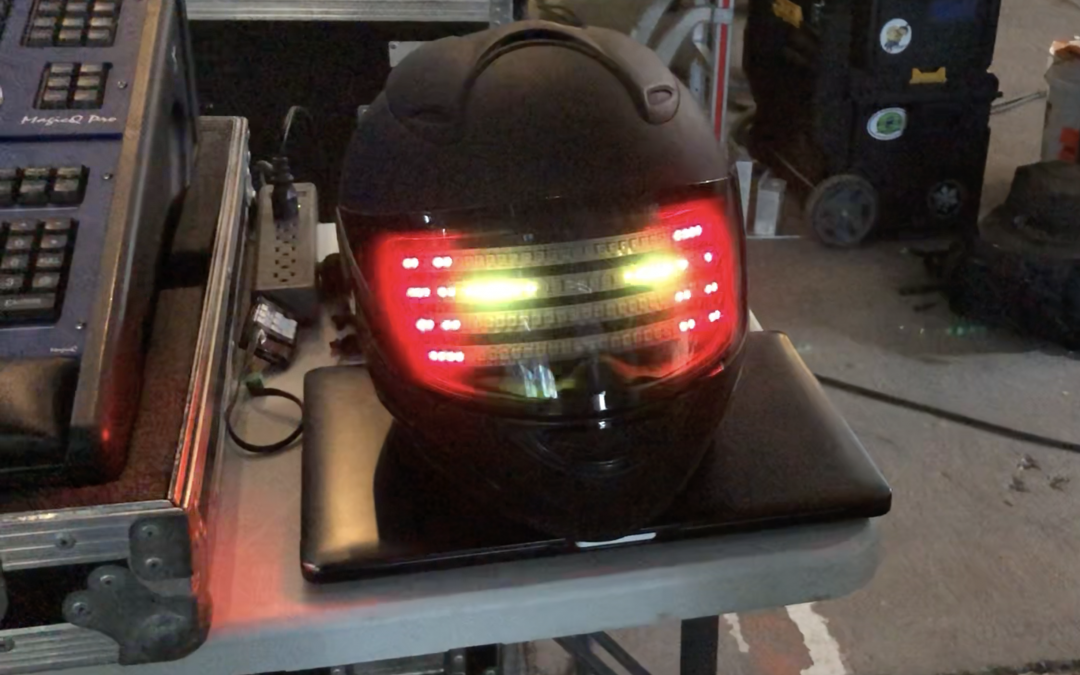
by Aimee Wilson | Jul 12, 2022
“I became aware of RC4 wireless back in 2015,” states Sean McClellan, a feature film and television gaffer and best boy electric based in Albuquerque. “I was working as a core electrician back on a show called Independence Day: Resurgence, and there were many alien blaster prop guns that had integrated [RC4 Wireless] DMX4dims. That’s where I began to learn about them. Our lighting equipment package outside of the props world encompassed LEDs and included custom-built miniature LED pads and sticks; they were just ribbon-based LED products of various sizes that we would control with RC4 DMX4dims. The RC4 equipment was there, I saw it and thought ‘what is this really cool piece of technology.’ That’s where I got my start learning about the RC4 ecosystem,” he notes.
From there, McClellan began to delve into the world of RC4 Wireless products. “I started to learn about it and when there was a lull between lighting setups, I would sit there on my phone and I would scroll through the user manuals from the website,” McClellan notes. “I would familiarize myself with the product line, how to configure them, how to troubleshoot, and learned what all the blinking lights meant. I really educated myself on the system.” His first RC4 Wireless purchase was the ever-popular DMX4dim. “After I learned that system, I went on to gaff a couple of smaller projects, and I purchased my first set of DMX4dims with the transmitter, the DMXio, and from there, I built my own custom LED pads and sticks. From there on out, my inventory expanded, and I started dipping into LumenDim devices. From there, I primarily stayed in LumenDim.” McClellan has a variety of RC4 Wireless LumenDim devices, including the LumenDimPix and LumenDim micros. “In our workflow, with my gaffer, Jay Kemp, we keep the DMX4dims as a backup system,” adds McClellan.
One of McClellan’s favorite features of the LumenDim products appeared in July of ‘21. McClellan explains: “The latest firmware that just came out-the motion picture profiles, that’s my go-to now because it mimics popular CCT/RGBW modes found in professional lighting products, such as Arri, KinoFlo, and so on. To me, that’s pretty unique. My gaffer and I have newly designed LED pad and stick fixtures that were built to maximize these new profiles, so being able to use that with our programmer and have a seamless profile that works across the board that you can color match more easily, that’s probably my number one go-to feature.” James David Smith, CEO and Chief Product Designer at RC4 Wireless notes, “Last year, I created two new color-control profiles that I based on existing fixtures made by Arri, Kino Flo, and Astera. Since everyone in motion picture work uses those fixtures all the time, it made it much easier for them to use our devices.”
Since McClellan is in New Mexico, he works on plenty of period westerns. “We typically use a lot of the LumenDimM2micro and M4micro units for lantern effects. We’re always modifying handheld lanterns to work wirelessly on batteries. People think it’s just a lantern, but so much goes into it to make it reliable. Not only for the battery, but also being reliable if it gets dropped.” In the winter of ’21-‘22, McClellan was on the film The Pale Blue Eye that used 12 lanterns with RC4 Wireless LumenDimM4micros with external antennas for added signal strength. “Each character had a different style lantern and we had to be prepared with backups in case someone slipped and fell down.” We had three backups for each style of lantern all set, teched-out with the programmer, Kevin Hogan, in case the lantern got dropped and didn’t work,” recalls McClellan. The lanterns—as well as the RC4 equipment—worked perfectly.
RC4 Wireless gear is also there when it’s time to do pixel effects. “Back in 2019, we did a Netflix tv show called Daybreak, and the director wanted to mimic a Daft Punk-style motorcycle helmet. I worked with the rigging gaffer, Theo Bott, and the fixtures foreman, Joshua Phillips, and we used the LumenDimPix pixel drivers. We made a Daft Punk-style helmet for that which looked really cool on camera. Our programmer, Patrick Toohey, did some really cool pixel mapped effects on it,” McClellan states.
Recently, McClellan worked on a film that IMDB calls Wile E. Coyote. He explains, “We primarily used LumenDim4s, LumenDimM4s and M6s to control our LED light pads and litemats. I also worked with the fixtures foreman, Todd Roberts, on that job; they had to build a proxy bomb and wanted to simulate the fuse igniting. We took a couple of LumenDimM4 micros, and stuffed them down in there with some 5 channel LED ribbon to emulate the flicker from a fuse. That’s one of the things I love about the RC4 equipment is the versatility; you can take a device, you can change modes and do a Flickr effect, you can use straight DMX control or you can use RC4 Colormatch™. The versatility in each device is pretty astounding actually; it enables end-users to tailor the device to their work flow and get the desired end results rather quickly.”
For people who haven’t used RC4 equipment, McClellan says, “If someone is working in special effects and they need to control a servo motor or a telephone, they should look at RC4, because chances are they’re going to have some sort of feature that will suit your needs.”
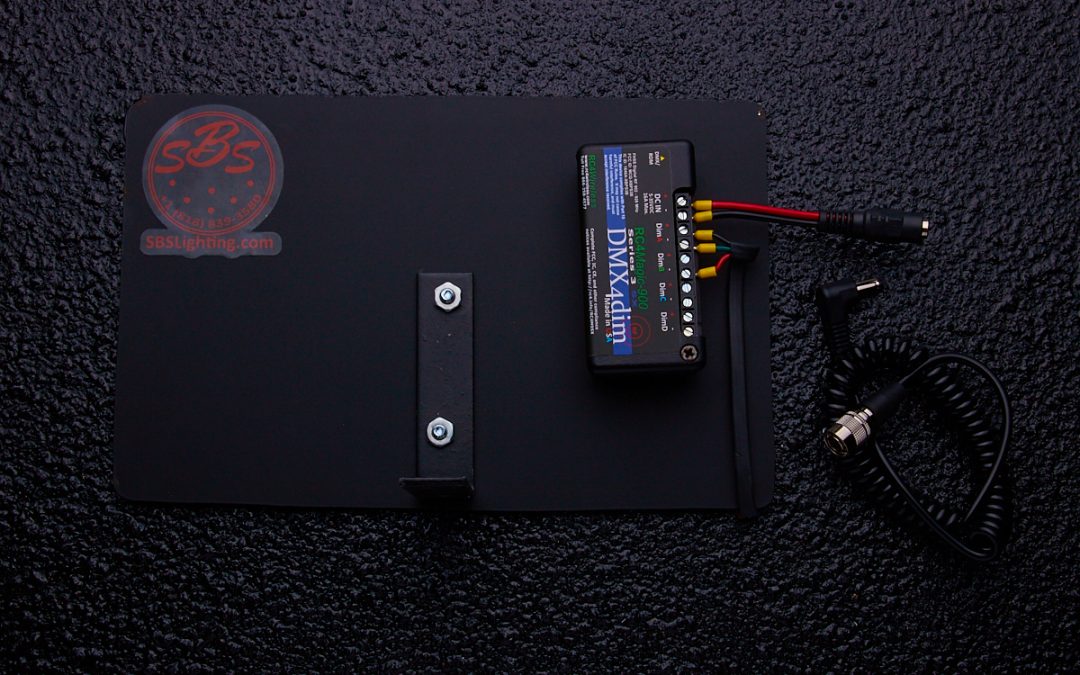
by boss | Dec 19, 2019
‘America’s Got Talent’ has been at the forefront of prime time television for over a decade with a vast array of performers; from magicians to ventriloquists, dancers to singers, the show has it all. Since 2014, ‘America’s Got Talent’ has relied on the incomparable and iconic design firm, Full Flood Inc. for all of their Emmy-nominated lighting. The Full Flood team, headed by Lighting Designer Noah Mitz and Lighting Directors Michael Berger and Will Gossett, partnered with RC4 Wireless to provide AGT with all of their wireless dimming and DMX needs.
“Each week at AGT the creative team comes up with ideas that sometimes require battery-powered, wireless controlled devices,” notes ‘America’s Got Talent’ Best Boy Scott Beck. Full Flood then turned to the RC4 Wireless 900MHz series of products for their wireless needs. “We exclusively use 900MHz products on our shows,” comments Lighting Director Michael Berger. “There is so much else within the wireless spectrums here — cameras, microphones, internet, Clear-Com, and so on — that this was the safest spectrum everyone felt comfortable with.”
RC4 was the first wireless dimming firm to be authorized by the FCC to use the 900MHz frequency band. Beck is a fan of RC4’s 900MHz products as well. “They work great because their frequencies are far from other devices, so we don’t have signal conflicting issues and signal strength has been solid in large arenas.” adds Beck.
James D. Smith, Chief Product Developer and CEO of RC4 Wireless adds: “There are some important differences between what RC4 and other firms are doing in 900MHz; just saying we’re in the 900MHz band is like saying we are both driving on Interstate highways. Other firms with 900MHz are using much, much lower RF power levels, which will be limiting their range a lot compared to us. The RC4Magic-900 line of products can transmit with up to 250mW of power, delivering a range that has exceeded 1000 feet for many users.”
For ‘America’s Got Talent’, the team paired RC4 Wireless Series 3 DMX4dim with the Steadicam rig. “The wireless needs for this show derived from a controllable fill light we desired on the Steadicam rigs,” Berger explains. “We found ourselves in lots of tight places doing host intros where a traditional lite panel or key light source would not work; adding a controllable, lightweight LED rig directly onto the camera gave us an easily deployable solution which was always nearby even as things within the show structure changed.” Beck adds, “We had an SBS Lighting Steadi Fill Light on the Steadicam, which is 16v Bi-Color White LED light that fits around the camera’s teleprompter and driven by a 2 channel 900MHz dimmer–16v @1.6amps. ”The DMX4dim was a success on the set and gave Full Flood a new tool in their lighting arsenal. “The camera operators have responded well to the low weights of the dimmer units. Its success on this project has pushed us towards using it on other projects like ‘The Oscars’, ‘The Grammys’, ‘The Tony Awards’ and the ‘BET Awards’. Its size and reliability have pushed us towards incorporating the products into other aspects of the show. Including dimming practical props, incorporating pixel tape into musical instruments,” says Berger.
The Steadicam wasn’t the only place that the Full Flood team used RC4 Wireless products. “We had a wireless eye light on a moving golf cart, which was a 4’ run of SBS Lighting Bi-Color 240 LED. 12v 4amp at full driven by a 2 channel 900MHz dimmer. We also used an RC4 Wireless DMXpix receiver [in 900MHz] on guest performer Brian King Joseph’s LED pixel violin,” says Beck.
Beck handled the lighting wireless programming on the set. “Programming is a breeze with the one-click system to change DMX address and modes. However, I set the modes once and use the same settings on each show. So, I don’t often switch between modes or addresses.” Beck also has a tip to pass along: “By addressing my wireless receivers to the 450 and above DMX channels I’m able to be added a device to a lighting system after the programmer has patched numerous moving lights in the beginning of a DMX Universe.”
Vocalist Kodi Lee got the final nod from judges Simon Cowell, Howie Mandel, Gabrielle Union, and Julianne Hough and won this season of ‘America’s Got Talent’. The show has already been renewed for its 15th season.
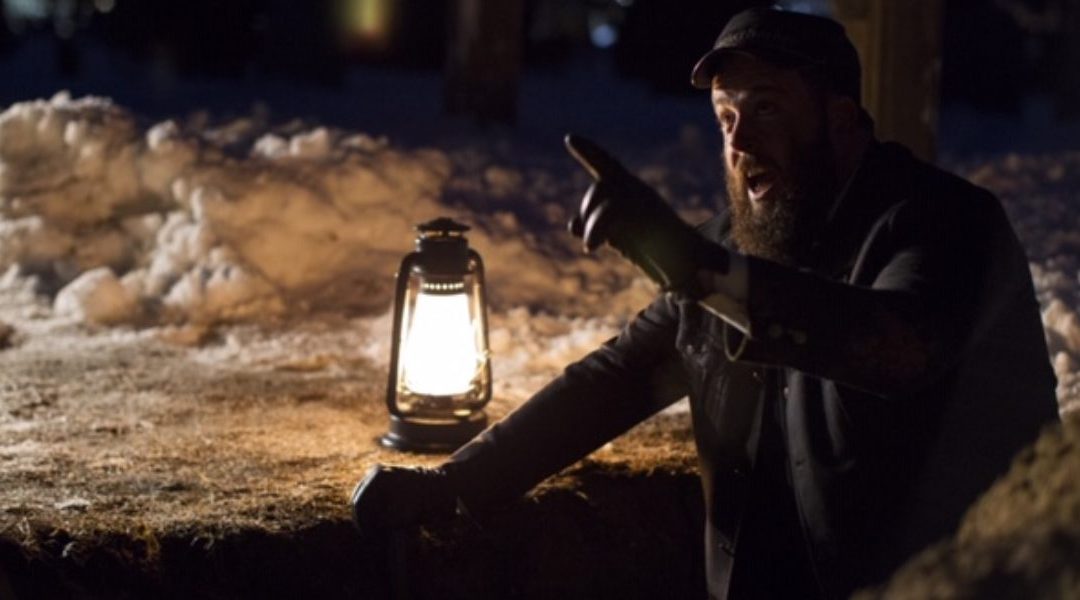
by boss | Jun 3, 2019
Motion picture and tv gaffer Peter Walts of Labour Party Lighting is a busy man. He’s worked on numerous feature films and tv series, including Magic Mike, Contagion, Side Effects and more; his tool kit includes dimmers from RC4 Wireless. “In terms of finances, RC4 Wireless products work equally well in both the large budget and modest budget realms,” states Walts. In 2014, Walts worked on the critically acclaimed Steven Soderbergh cable series The Knick. “It was a full budget feature with a full-time board op; we used [RC4 Magic] DMX4Dims and we used the Flkr Effects Engine; it’s the best flicker engine on the market,” Walts says. The Flkr Effects Engine is an integral part of the RC4 Harmonized Design platform and is a part of all RC4 Magic wireless dimmers. “Our RC4 Flkr Engine is my first US Patent, so it’s kind of special to me. I worked with top designers at Disney to create a general framework they really liked and then consulted with numerous other RC4 Wireless users to fine-tune it. The result is a parametric method of defining a huge range of effects. Each parameter is controlled by a DMX channel level, much the way channels control parameters in a complex moving light,” notes James D. Smith, Chief Product Developer at RC4 Wireless. The Knick—and Soderbergh—also threw some curve balls at Walts. “The way Steven works, he shoots from the hip, so we didn’t pre-plan a lot of things. Steven would be editing at night, and then change his mind about the staging of a scene the next day. He’d suddenly want the actors to walk down a dark hallway; I always asked ‘are they holding a lantern?’ He’d want lanterns, so we’d turn them on and dial them on using the console or use it directly via the luminaire. With the Flkr Effects Engine, we had the ability to change a number of parameters and give our lights nuance; as a battery powered wireless dimmer, it’s perfect,” Walts says. Walts also found himself in a graveyard with a single lantern during the run of The Knick. “He explains: “We built a four channel LED into the lantern and we created a beautiful effect with the RC4 unit; we could even change the nuances in the course of the dialogue if we wanted to. The actor then put the lantern down, and then there was a four-page scene, and the lantern was the only light.” Fast forward to 2018 and Lizzie, a re-telling of the Lizzie Bordon tale directed by Craig Macneil. “I couldn’t hire a programmer for Lizzie, and used the DMX4dim directly with a luminaire, but I could still do it all myself. In fact, when we were working on Lizzy, there was no DMX except the RC4 equipment,” Walts explains. Once again, Walts turned to RC4 Wireless dimmers and the Flkr Effects Engine; this time it was for a fire. Walts explains: “For the scene, we would be hand-held so I couldn’t have any cables; we took Litegear LiteRibbon x2, x4, and x6s, laid them on a 2×3 flag along with a battery and put it in a fireplace along with the RC4 dimmers to create the fire. I had my battery-powered LED flag with four channels of different glows, we could make it brighter, or turn it down and make it smoother. It was also the only light in the scene.” Smith adds: “The most powerful elements of the Flkr Effects Engine are the random-number-generators. You can set up a look you like, and then apply varying amount of randomness to select parameters. Since every unit is creating its own randomness, you can configure many devices with exactly the same set of parameter values and they will all look like the same effect but not synchronized. Design a fire in a barrel effect, then put it in multiple barrels all over the stage and they look totally realistic because of they all dance the way you want, but they all dance independently — just like real fires in barrels would. The RC4 Flkr engine is one of the most powerful effects systems out there, but it’s still easy to use and understand with a wide gamut of looks it can produce.” As Walts looks towards the future, he sees… productions that are wireless. “More and more, we’re being asked to do high budget effects with lower budget means, and RC4 Wireless products are terrific for me. I could go full bore with the RC4 Wireless equipment and use it with a programmer, or use it alone, depending on the budget and the scope of the show,” he concludes.
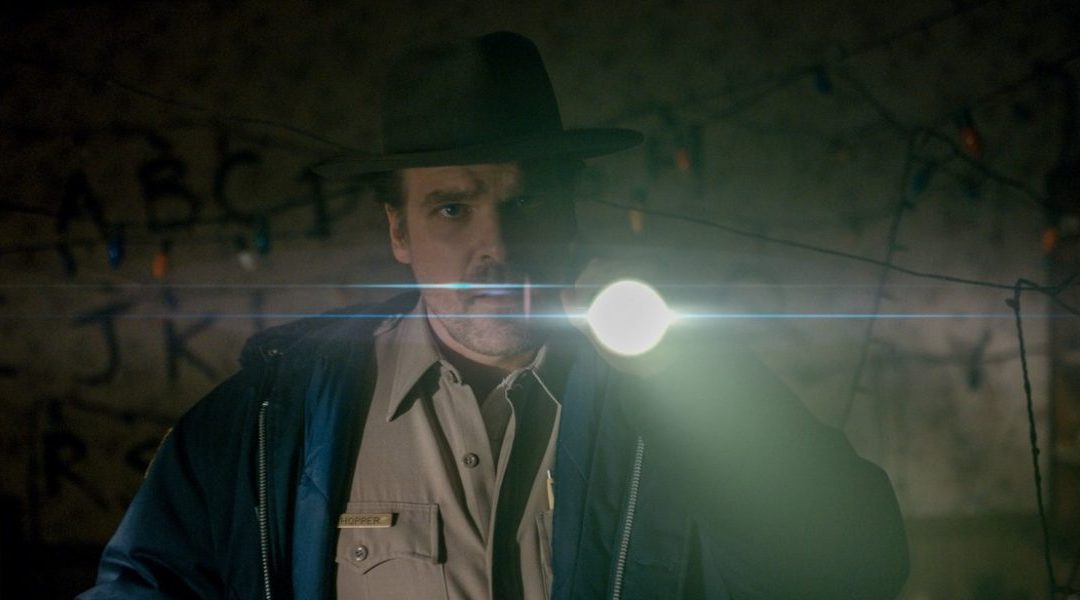
by boss | Nov 28, 2017
With a title like Stranger Things, one might expect a world that’s intense, mysterious and dark. And one would be exactly right.
However, dark isn’t always metaphorical; the Netflix series often takes literal forays into the dead of night, darkened rooms, and ink black tunnels. When it was time to shine a light into the void, the Stranger Things lighting team turned to RC4 Wireless. “On Season 2, we were told a couple days into principal photography that there was going to be a lot more lighting effects than Season 1, especially involving flashlights and other custom-build fixtures. Not only that, but we were going to need to start to modify the flashlights not just to flicker and pulse on command, but to swell and get brighter during the scene. And all of this had to happen in a much smaller package so it could easily be carried in a flashlight by multiple members of the cast,” explains Jeff Harkes, Lighting Console Programmer – Stranger Things 2.
To make those flashlights work, Harkes and his co-conspirator on set, Fixtures Foreman Antimo Ponticello, turned to the LumenDimM2micro from RC4 Wireless. “The LumenDimM2micro was a good choice for this project because it’s a Swiss Army knife for portable applications of this nature. Because of its size [2.9” x .77” x .43”], it is the obvious answer, but it’s also extremely responsive on a cue. The LumenDimM2micro’s CRMX integration through the LumenRadio transmitters and its ability to be remotely managed with RDM is unparalleled right now. There isn’t anything like it on the market for portable handheld lighting control,” Harkes states. The LumenDimM2micro features two channels of dimming, includes multiple PWM frequencies, as well as the majority of the RC4Magic Harmonized Design features that RC4 Wireless users know and love.
To create the flashlights, “We basically made it all fit into the flashlight sleeve and soldered it all back together so that the power signal from the RC4 dimmer was feeding the flashlight directly. That gave us full control to flicker, pulse, swell or dim the bulb on command all while allowing the actors to complete their actions unencumbered by wires up their sleeves or having to rely solely on visual effects to complete the look,” says Harkes.
Intensity control was also critical to the show. “This came in handy in a lot of applications — not only was Jeff able to run any effects he had programmed on the lighting console through the RC4 LumenDimM2micro we built into the flashlight, but we could also turn it off or dim the bulb down between takes to save the lithium batteries. Being able to dim the bulb would allow us to set the level for the camera and it took some of the responsibility of handling the flashlights out of the hands of the actors by letting us handle that remotely,” explains Ponticello.
There are over a dozen flashlights used on Stranger Things. Harkes notes: “Each flashlight across the whole show acted as its own separate project. No solution was going to work perfectly for all of the flashlights so each one had to be approached in its own way. However, in the end, every flashlight ended up using a LumenDimM2micro.”
This is the second year with RC4 on Stranger Things. Harkes explains: “In Season 1 the work with the RC4 LumenDims started in episode 1 with the bike lights. Jim Dornemann, our Dimmer Board Operator, wanted to use the RC4’s to control the lights on the bicycles remotely during the scenes. We did, and it went off without a hitch.”
As for the future, Harkes notes, “RC4’s products can really solve some of the common problems that we face every day in dealing with fixtures. Their technology is reliable and their customer support is very knowledgeable, helpful, and very quick to respond.”
As Stranger Things 2 moves into the future, RC4 Wireless will be there, helping them illuminate the cast’s forays into the darkness and the Upside Down.




